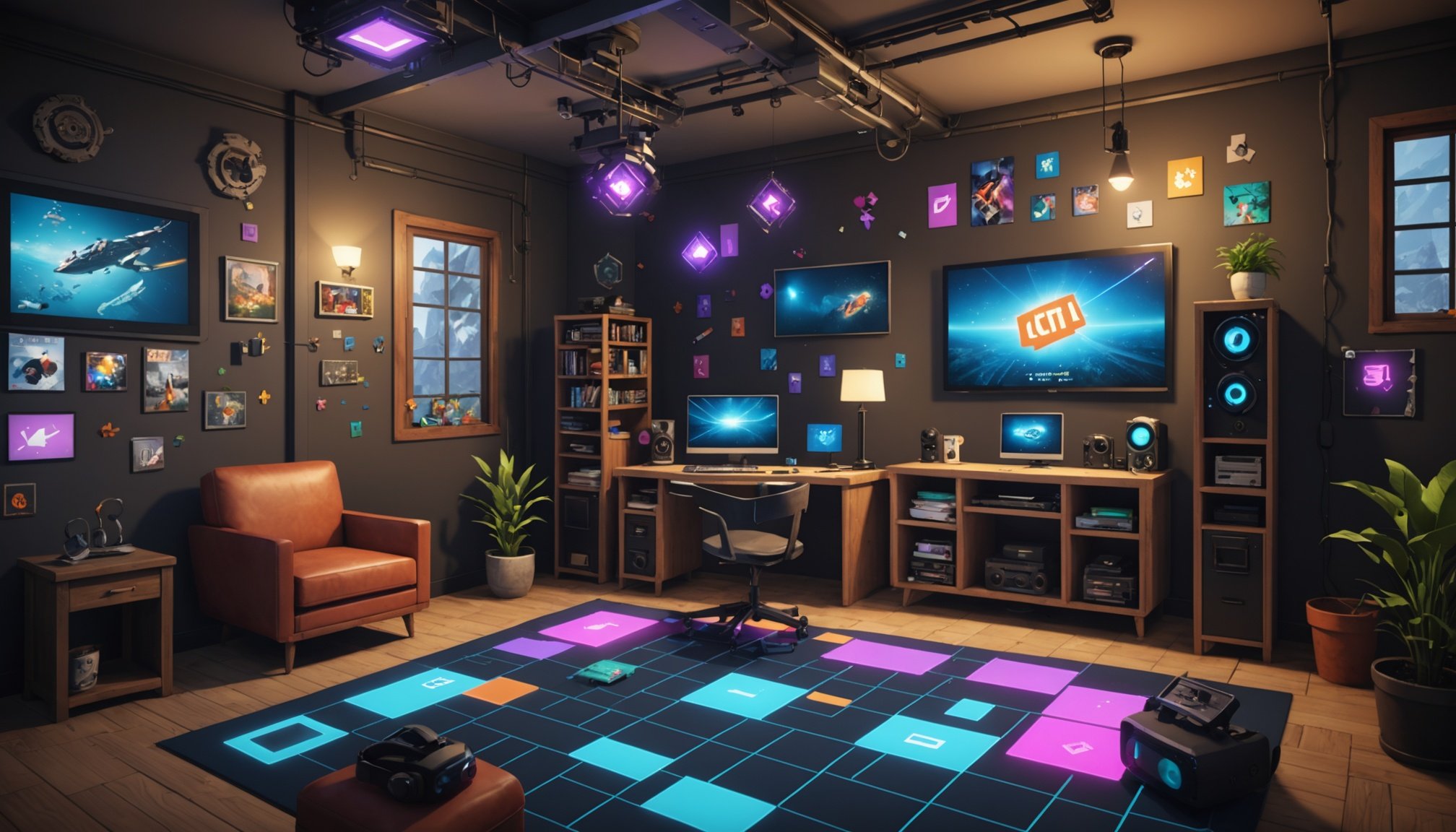Fundamental Usability Principles
In the realm of Usability in VR Games, enhancing player engagement is pivotal. Usability principles like consistency, intuitiveness, and accessibility form the backbone of any successful VR game. Consistency ensures that gameplay elements follow predictable patterns, fostering a learning curve that players can intuitively grasp. Intuitive interfaces reduce cognitive load, allowing players to focus more on the game rather than figuring out controls or mechanics.
Accessibility broadens the player base, allowing individuals with varying abilities to enjoy immersive experiences. Incorporating options like customizable controls and voice commands can significantly enhance inclusivity. For example, the VR game “Beat Saber” exemplifies these principles by integrating simple and consistent mechanics using visually engaging and accessible interfaces.
Also to read : Transform Your Woodland Adventures: Proven Techniques for Creating Realistic Forest Environments in Immersive Games
Effective Usability in VR Games is also about minimizing barriers and ensuring seamless player interaction. This means that game designers should utilize intuitive design elements that guide players naturally through the VR environment. The game “Astro Bot Rescue Mission” showcases high usability standards, blending a bright, easy-to-navigate layout with intuitive gameplay mechanics. By adhering to these usability principles, VR games can achieve deeper player engagement and satisfaction.
Intuitive Design Strategies
In the domain of Intuitive Design in VR, integrating effective strategies can significantly enhance user experience. A key focus is on spatial awareness, which plays a vital role in improving navigation within virtual environments. By employing intuitive layouts, VR interfaces guide users naturally, reducing frustration and disorientation.
Have you seen this : Unleashing Hyper-Realism: How Real-Time Ray Tracing Revolutionizes Reflections in Racing Games
To illustrate this, consider the design strategy of VR puzzle games, where spatial awareness is crucial. For instance, games like “The Room VR: A Dark Matter” utilize intuitive spatial cues, allowing players to solve puzzles through natural movements. This design leverages familiar interactions, making the gameplay experience more immersive and enjoyable.
Case studies from popular VR puzzle games further highlight the effectiveness of these strategies. Titles such as “I Expect You To Die” incorporate intuitive object manipulation and interactive environments, enhancing cognitively rich gameplay. These examples demonstrate how prioritizing intuitive design leads to more engaging and seamless experiences.
By embedding spatial awareness and intuitive interactions, VR environments can deliver heightened user satisfaction. The outcome is a smoother learning curve, empowering players to delve deeper into the game world without unnecessary barriers. Consequently, Intuitive Design in VR not only amplifies engagement but bridges the gap between user expectations and actual gameplay experience.
User Feedback Mechanisms
In VR environments, User Feedback in VR Interfaces is crucial for enhancing the user experience. Various methods can be employed to gather user feedback during gameplay, such as surveys, direct observations, and analytics. Feedback helps developers understand how players interact with VR interfaces, highlighting areas for improvement.
Iterative design plays a significant role in refining these interfaces based on user feedback. This approach involves repeatedly testing and improving the design, ensuring it evolves to better meet users’ needs. By responding to feedback, developers can make informed adjustments, creating more intuitive and engaging interfaces.
Numerous tools and techniques facilitate the incorporation of feedback into design processes. Usability testing platforms, user journey mapping, and heatmaps offer invaluable insights into user behaviour. These tools enable designers to pinpoint specific areas of the interface that require enhancement or simplification.
By focusing on User Feedback in VR Interfaces, developers can create interfaces that are more user-centred. This focus ultimately results in a VR experience that is not only enjoyable but also functionally robust. Implementing effective feedback mechanisms ensures that user voices are heard and considered, leading to more satisfactory player interactions.
Balancing Aesthetics and Functionality
In the competitive world of VR games, achieving a balance between aesthetic functionality and usability is crucial. Designers often face challenges in creating interfaces that are not only visually appealing but also functional and intuitive.
Aesthetics should enhance the gaming experience without compromising usability. To achieve this, designers can focus on simple and clean interfaces, where decorative elements do not overshadow essential functions. For instance, the game “Moss” combines enchanting visuals with a straightforward interface, ensuring players are drawn into its whimsical world without confusion.
Tips for a harmonious design include:
- Consistent Visual Themes: Maintain a cohesive look throughout the game to avoid distractions.
- Prioritise Essential Elements: Highlight important controls and information visibly, ensuring quick access.
- Minimalistic Designs: Use fewer colours and complex designs to keep the user focused on gameplay.
Several VR games excel in aesthetic functionality. A prime example is “Half-Life: Alyx,” which blends immersive visual storytelling with intuitive interaction. Through strategic design choices, it sets a benchmark for balancing aesthetics with functionality. By learning from these examples, designers can create VR interfaces that captivate players while delivering seamless interaction.
Addressing Common Challenges in VR Interface Design
When delving into Challenges in VR Interface Design, developers encounter several hurdles that can impact user interaction. One significant challenge is crafting interfaces that are both immersive and practical. Users often struggle with interfaces that are visually overwhelming or lack intuitive guidance, leading to frustration.
Common pitfalls include overloading users with excessive visual elements or creating interfaces that rely on intricate gestures, which are not easily learned or remembered. Developers must strike a balance between providing engaging visuals while streamlining usability.
To overcome these challenges, developers should focus on user-centred design principles. One effective solution is simplifying gesture controls, ensuring they mimic natural movements. Additionally, employing clear visual cues can aid users in understanding their surroundings and objectives without becoming disoriented.
Innovations in technology have introduced tools such as eye-tracking and hand-tracking which enhance user interaction by facilitating more intuitive controls. These technologies can reduce cognitive load by allowing users to interact naturally within the VR environment.
In summary, by prioritising simplicity and leveraging innovative technologies, designers can address and surpass the Challenges in VR Interface Design, creating engaging and accessible experiences for all users.
Effective Interface Designs in Existing VR Puzzle Games
Exploring Effective VR Interface Designs means diving into the elements that make a game truly engaging. Notably, VR puzzle games have excelled in this area by merging clever layouts with natural interactions. A prime example is “The Room VR: A Dark Matter.” This game artfully utilises realistic environments, where each object behaves as players expect, enhancing the puzzle-solving experience.
In analysing successful interfaces, simplicity and intuitive navigation come forward as pivotal factors. Titles like “I Expect You To Die” present streamlined interactions, allowing users to intuitively manipulate objects without deviating from the immersive narrative. The clear visual cues and minimalistic design are essential in keeping players focused on the challenge rather than struggling with controls.
Lessons from these games are invaluable. Effective VR Interface Designs should focus on clarity, straightforward navigation, and user-friendly controls. Embracing minimalism in design ensures players can concentrate on what truly matters: the gameplay.
In essence, incorporating user-friendly and accessible interfaces, as demonstrated by leading VR puzzle games, offers invaluable insights for developing future titles. By learning from these established designs, developers can enhance player satisfaction and engagement in VR environments.











